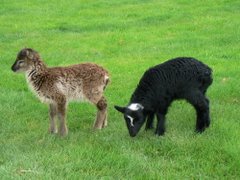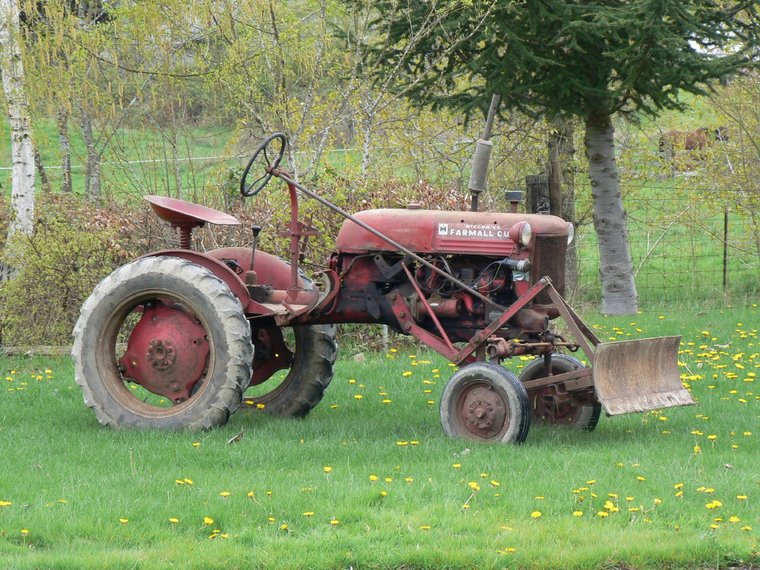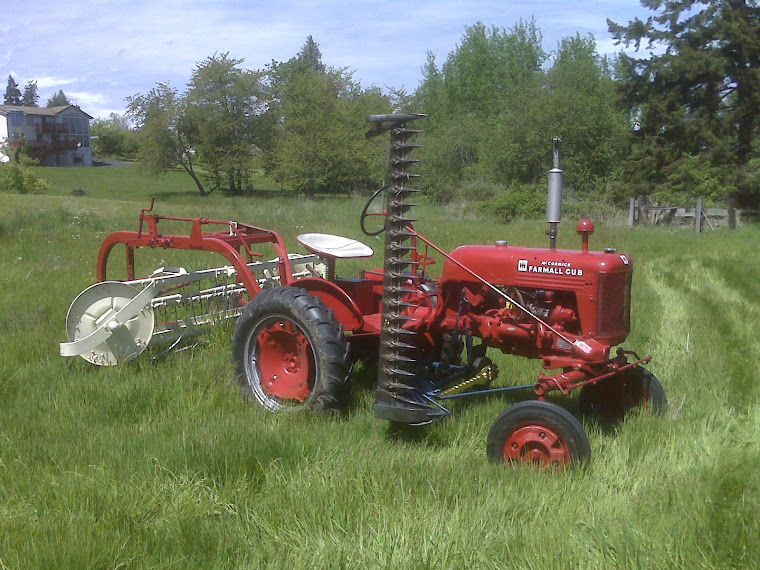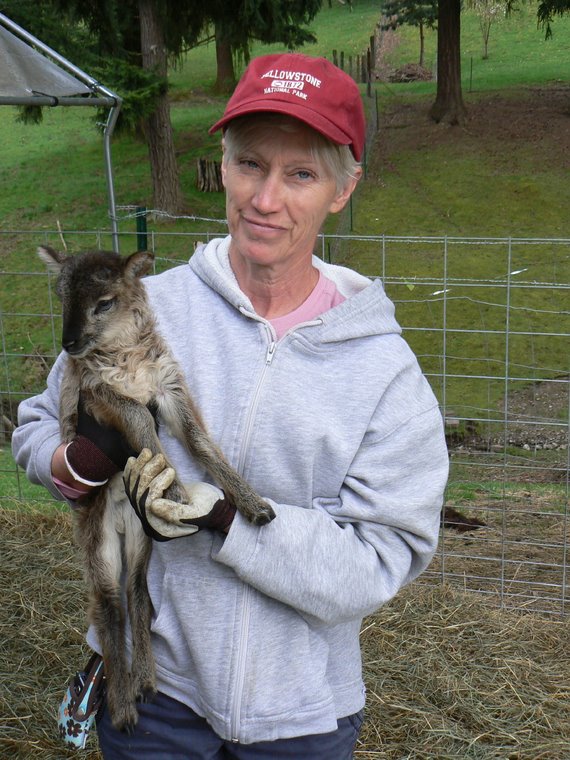The other lamb is more interesting to me. It is from our "white spotting extent" phenotype breeding group. All these sheep have white spotting and I am testing the patterns of how the extent of coverage and locations of white spotting are changed with each generation. Most simply stated, the hypothesis, (as I have documented more completely here):
http://woodlandcreekfarm.com/Phenotypic%20Expession%20of%20the%20White%20Spotting%20Allele%20in%20Soay%20Sheep.pdf
is that the extent of white on the lamb is roughly a summation of white extent of the parents (not all that surprising, is it?).
Here is little ram Woodland Creek Laramie - DOB 25-Mar-08, and his dam Esperanza.
There is a second objective in our breeding program--and that is to test the hypothesis that light phase at Brown locus, in NA Soay population in the Pacific Northwest, has been traditionally very heavy in the pheomelanin component and this "masks" the light phase. I have been selecting those who show less and less "brassy red" in their coat, and this has been lightening the overall phenotype, bringing them (to my eye) more in line with the classic light phase coats shown by the NA RBST Soays in the PNW (aka "British" Soays).
As examples of this progression, I was convinced that Esperanza was light phase despite her fairly dark phenotype, and one of her twin lambs in 2006, Chico, was particularly light coated and a "flat" brown, rather than "coppery reddish" overtone (which his twin brother Kitsap DOES have). The sire (Teed's Montana) was, I was convinced, also light phase, but with a shocking coppery-red element - note the top of his cape / mane below (shines reflectively in the sunlight).
Here is Montana '05:
When Montana was bred to Esperanza, in 2006 she produced the twin lambs Chico '06 and Kitsap '06:
Chico'06 grew up to be a very nice light color (shown fall of 2007):
In a related line, Esperanza's mother Maria (almost identical phenotype to Experanza, had a light ewe in 2005, Frosty. Frosty, bred to Chico in 2006, gave a VERY light ewe lamb Saratoga. Here is Frosty '05 and Saratoga '07:
Compare the resulting coat colors when in a single image (fall 2007) you can see Esperanza, and Saratoga after some sun-lightening of her mature coat, and in addition Esperanza's 2007 lamb Molly, who in contrast has a self-colored dark sire, so shows a dark coat phenotype.
I guess one other thing to point out in this "line" of Soays - not only are they the rarer light phase, and the relatively less common white spotting, they ALSO are polled ewes. Maria and Esperanza were both truly polled, Frosty, Saratoga, and Molly are all button scurred (so look polled from a distance.) That's a lot of homozygous recessive traits in one line! Now if I can just get self-colored too... just imagine a self-colored, light phase, white spotted, polled ewe... that's almost certainly never been done before in North America with Soays, and maybe never anywhere in the world! I'm probably a couple years from that.
Lastly, with digital photos where the camera tries to auto-expose, and often has a difficult time with very light or very dark animals mostly fill the frame, one can get mis-representative color renditions. One way to get relative coat color differences it to get several patterns in the same photo. Here is one from inside a shed yesterday, but showing a range of our flock coat colors.

In this photo you can see, from lower left to right, the VERY light new ram lamb Laramie, his fairly light, flat brown, low pheomelanin dam Esperanza, the hind end of the VERY heavy red-brown pheomelanin classic "doberman" phenotype from Blue Mountain, in Happy Valley Maddie, then a self-colored black Woodland Creek Olivia, and finally her '08 ewe lamb Madeline, sired by the light phase wild pattern Chico, shown above. Just look at the range of coat colors one can get. (Yes, I realize that when the majority of folks look at the flock they say "Aren't they all just brown?).










No comments:
Post a Comment